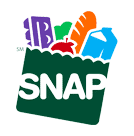How can you use your smartphone to keep up with all the people in your life and help them stay informed about what you’re up to? There are dozens of ways, and all of them offer the benefit of a closer human connection with those you love and care about. Times have changed. The modern, inexpensive, and most efficient way to “stay in the loop” is by using your smartphone.
Nowadays, people have so many more ways to connect while they’re apart from each other. In the old days, the only thing you could do when a loved one was far away was either write a letter or make a long-distance phone call. Both of these methods had huge disadvantages. Letters were personal and a great way to connect but might take several days to arrive, and then you had to wait a few more days for a response.
Long-distance calls were “the next best thing” to being there, as the classic TV commercial said, but the cost was usually quite high because you had to pay an upfront fee and an additional per-minute charge. Today, anyone who has a smartphone, like the ones used in the Lifeline program for low-income consumers, can connect with loved ones in numerous ways.
Staying in Touch with a Lifeline Program Phone
Exactly how can people go about making those important connections? There are dozens of ways you can use a phone, along with countless applications (also known as “apps”) to keep loved ones in your life even when they’re traveling, living, or working in a faraway place. Here are the five most common methods that smartphone user prefer for staying connected with others.
1. Talking: It’s easy to forget about the most basic of all phone functions: conversing with others. For more than a century, that’s all we could do on our phones. However, even the most sophisticated smartphones are still used for talking more than for anything else. When your spouse is away, for example, there’s nothing better than hearing the sound of his or her voice over the telephone. You can catch up on the day’s events and discuss what you plan to do days, weeks, or months from now. Talking to people is the number-one most popular way to use a smartphone.
2. Texting: Texting is a close second, after talking, in the top-five ways people use their phones. The nice thing about sending a text is the simplicity. All you do is type the words you want to convey, click “send,” and that’s that. The recipient sees your message instantaneously. Then, that person can answer you immediately, and you’ll see his or her words just as quickly.
For those who don’t have time for a full-blown phone conversation or who just want to ask a quick question like, “Are you going to the party next week?” texting is the ideal way to communicate. Another good thing about texts is that you can save them and read them later. There’s no need to be present or even with your phone when you get a text. Your friend, child, parent, spouse, or sibling might send you a text late at night while you’re asleep. In the morning when you turn your phone on, you’ll see it. You’ll also see what time it “came in” to your phone.
3. Emailing: Emailing used to be something you only did on a standard computer. Modern smartphones let anyone email others with ease, any time of the day or night. Simply log on to your email account, type a message, address it, and hit “send.” Emailing is similar to texting. One difference: an email won’t necessarily show up on a person’s phone. It’ll appear in his or her email box. You can send an email, for example, to someone who doesn’t even have a telephone. As long as that person has an email account and a computer, he or she will get your message.
4. Video Calling: One of the most interesting ways to connect with another person is through video calling. It’s a relatively new way to communicate, and all you have to do is download a video-chat app to your smartphone. After that, you’re ready to talk with people and see them at the same time.
5. Social Media: There are now hundreds of different social media channels or “platforms.” You have probably heard about several of the biggest ones, all of which have billions of users. It takes about two minutes to download a social media app to your phone. Then, you’ll be able to post photos, messages, announcements, and daily updates to your own social media page via your smartphone.
Why It’s Good To Stay Connected
It’s important to stay in touch with the important people in your life for all sorts of reasons. If you’re one of the thousands in the Lifeline program for low-income consumers, you already know how much joy it can bring to hear someone’s voice or see that person’s face when he or she is hundreds or thousands of miles away. Plus, it’s fun to have a conversation by calling, texting, or emailing a person you miss. Using your Lifeline program phone to make an important connection with another person is good for another reason: It keeps you healthy.
Doctors say that adults who stay in touch with others, whether in person, over the phone, via email, or just through text messaging are happier and healthier. It seems that just interacting with others can help to keep our minds sharp and our emotional life stable. Humans like to relate to others; it’s our nature. Being cut off from the world is not a good thing.
Learning is Living
When we talk and interact with others, our brains stay healthy. That’s a fact. But what about the advantages of learning to use a smartphone? Fortunately, the technology has improved and become much more simplified than it was a decade ago. Today’s smartphones aren’t difficult to operate. Even if you avoid computers and all things “tech,” using a smartphone is typically a breeze.
Most consumers who spend just a few minutes learning how to send an email, chat, make a regular phone call, take and send a photo, text, or check the local weather are surprised at how simple and uncomplicated today’s smartphones are. The upside is that, after 10 or 20 minutes of getting used to the device, you have a vast collection of services at your disposal. You can text your friends, send pictures of a new pet to your relatives, email a coworker about an upcoming event, and do pretty much anything you want. The beauty of smartphones is their simplicity, plus the obvious fact that there’s really no better way to stay connected.







